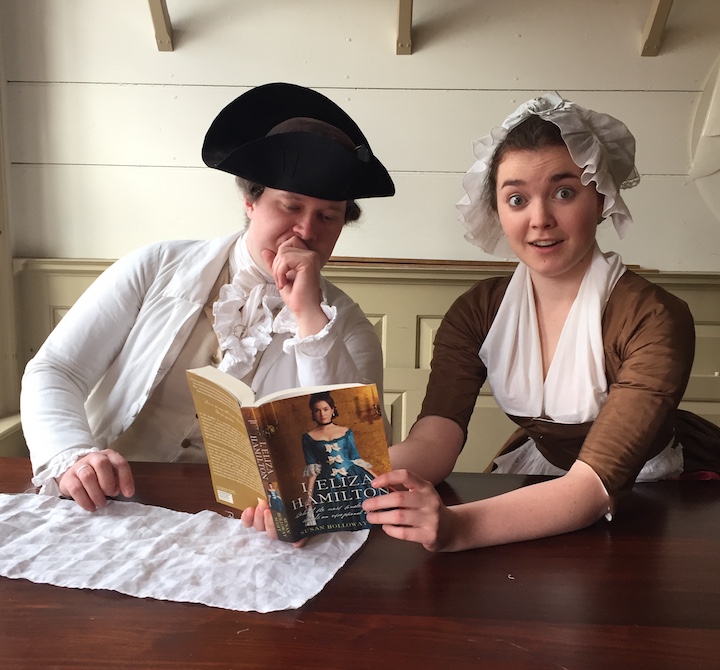There aren't any surviving dresses or gowns that we definitely know were worn by Eliza Schuyler Hamilton, nor, like some women, did she leave descriptions of favorite clothes or record what she wore where. Still, it's possible to guess what might have been in her wardrobe. She was born into a family that wasn't afraid of displaying their wealth in their home, so it's a good guess that Eliza and the other Schuyler daughters were dressed fashionably, and expensively. Alexander Hamilton was considered something of a male peacock who favored brightly colored silks that he had tailored to show off his military bearing, and it's likely that he encouraged Eliza as his wife to dress fashionably, too.
Forget the myth of colonial homespun. Even in the middle of the Revolution, affluent New York ladies dressed every bit as stylishly as their counterparts in London. The newest fashions were only a trans-Atlantic voyage away; a new style could appear one day at Court, and be available in New York shops less than a month later. Even Eliza's older sister Angelica noted in a letter to Eliza that the women of New York were following - and wearing - the latest extravagant trends more closely than the ladies in London.
This two-piece ensemble was worn in Albany (the Schuyler family's hometown) around 1790, and the fabric is a chintz cotton - a costly luxury fabric in the 18thc - painted and dyed in India for the export market in Europe and America. The ruffled peplum at the back waist of the jacket added a stylish accent that must have fluttered charmingly when the wearer walked. To achieve the fashionable volume in the skirts - less extreme than earlier in the 18thc, but still in evidence - the petticoat would have been worn over a false rump. The cotton jacket is lined with less expensive linen, making the ensemble both cool and comfortable in warmer weather.
And yes, there's even a connection between this dress and Eliza. The ensemble belonged to Anne Van Cortlandt Van Rennselaer (1766-1855), a cousin of Eliza's through her mother, who was also a Van Rennselaer. Anne and Eliza were close in age, and once Anne married Philip Van Rensselaer in 1787 and moved to Albany from Croton, NY, Anne and Philip belonged to the same Dutch church as Eliza's family. They almost certainly met socially. Both women's husbands were involved in politics, too: Anne's husband Philip was the mayor of Albany, while Eliza's husband Alexander served in the New York state legislature, attended the Constitutional Convention, and was the first Secretary of the Treasury in the new federal government.
As for this chintz ensemble - I wouldn't be at all surprised if Eliza had one much like it in her wardrobe, too. Alexander would have approved.
Above: Women’s dress, American, made of imported cotton, c1790. Collection of Colonial Williamsburg.
Read more about Alexander and Elizabeth Schuyler Hamilton in my historical novel I, Eliza Hamilton; order here. My latest historical novel, The Secret Wife of Aaron Burr, is now available everywhere. Order here.



















